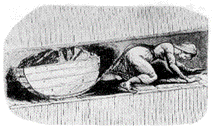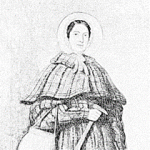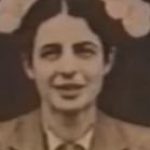Today marks the beginning of #WomensHistoryMonth and we’re sharing the stories of women who made engineering history: from the lesser known Brunel women, trailblazing female engineers from the past or the women making history today with their feats of engineering. Helen Close of the Women’s Engineering Society shares her blog on the female tunnellers who trailblazed their way underground.
Superstition holds the belief that the presence of a woman in a mine or tunnel is bad luck, and certainly the prevalence of that belief could be seen throughout different countries during the 20th century, and even as late as Tokyo in 2001 when a group of women were barred from entering a tour of a newly constructed bullet-train tunnel.[But this hasn’t always been the case, as it was common for women to work in the gold mines of Ancient Egypt.
The Mines and Colleries Act 1842 prohibited all females in Britain from working underground in mines. The legislation’s intention was to address exploitation of cheap labour and poor working conditions of women and children (the act also prevented boys under the age of ten working in mines). In the 1920s and 1930’s the act was adopted by the International Labour Organisation (ILO) and the effect of this was to restrict women working underground on a more international scale and a distinct gender divide in the mining and subsequent subterranean industries, which still largely persists today in the UK. The fact that this legislation was introduced in Britain and more globally means that women must have been previously working underground but their stories have largely been lost to the public record.

A female hurrier. Public domain.
As it is International Women’s Day this month, we decided to dig up some women involved in mining and tunnelling, or connected with the industries, who have been lurking in the darkness.
Martine Bertereau Baroness de Beausoleil (c.1600–death after16 42) was a French mining engineer and the first recorded woman mineralogist. She travelled with her husband across Europe in search of mineral deposits. They surveyed over a hundred potential mines in France in service of King Louis XIII. Bertereau and her family were accused of with witchcraft on several occasions (because of the methods she used to find minerals which included divining rods) and she died in prison sometime after 1642.

Sketch of original painting of Martine Bertereau by Sophie Brissette
Lucy Thomas née Williams, (baptised 11 March 1781 – 27 September 1847) was known as the “mother of the Welsh steam coal trade”. After her husband’s death in 1833, she took over the running of his coal mine at Waun Wyllt, near Abercanaid, south of Merthyr. The company then began supplying coal to London. Although an astute business woman, it would appear that Thomas was possibly illiterate, as archive documents show that she signed her name with an “X”. When she was refused entry to the Cardiff Coal Exchange she informed them by letter telling them that ‘My coal is equal to any mans, failure to grant entry will lead to my business lining another’s pockets’. She died of typhoid fever in 1847.
Helen Monica Maurice (Mrs Jackson) OBE (30 June 1908 – 20 September 1995) was managing director and chairman of the Wolf Safety Lamp Company from 1951-1988. She was known as “the Lady of the Lamp” throughout Yorkshire’s mining industry. Having had a good education and able to speak three languages Maurice had a successful career for over 30 years in mine lighting. She was the second woman, after Caroline Haslett to be elected as a Companion of the Institution of Electrical Engineers. In 1938 became the first and, until 1978 the only, female member of the Association of Mining Electrical Engineers.

Figure 3 Monica Maurice from The Woman Engineer journal
Nefise Akçelik (1955-2003) was a Turkish civil engineer who specialised in building tunnels. During her lifetime she worked on 200 tunnels and projects. The ‘Ordu Nefise Akçelik Tunnel’ which she worked on but did not live to see completed, was renamed in her honour. At the time of opening, it was longest tunnel in the country.
Janet Bonnema 1938–2008 was a US civil engineer. In 1970 she was hired as engineering technician for the Eisenhower Tunnel construction project but the administration of her job application had erroneously recorded her as a MR. When Bonnema called to accept the job being offered, she was told that “no women are allowed in the tunnel” due to superstition, and instead the department created a special engineering technician position for her that was office-based. In 1972, she filed $100k lawsuit for sexual discrimination, which was settled out of court for $6,750. When first entering the tunnel, sixty-six men temporarily walked off the job. She died in 2006, having paved the way for women to once more work underground.
Ironically though, the patron saint and protector of miners and tunnellers is a woman, St Barbara and statues of her were used for luck during the boring of the London Crossrail Elizabeth line. Fortunately, there are now women engineers, with their boots back underground, working on the Crossrail project too.
